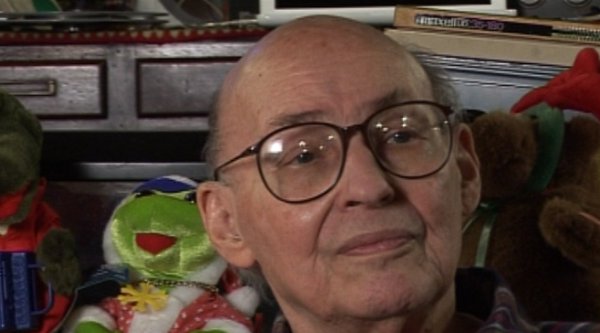NEXT STORY

'You can pull something with a string, but not push it'
RELATED STORIES

NEXT STORY

'You can pull something with a string, but not push it'
RELATED STORIES


|
Views | Duration | |
|---|---|---|---|
| 71. Freeman Dyson proves what I couldn't | 4579 | 03:17 | |
| 72. Solving Emil Post's problem | 3543 | 03:00 | |
| 73. Solving Post's unsolvable problem leads to the 'Minsky Machines' | 1 | 3378 | 03:49 |
| 74. Andrew Gleason's eight year plan of attack | 3193 | 03:40 | |
| 75. 'You can pull something with a string, but not push it' | 3034 | 02:02 | |
| 76. Will machines ever understand Aesop's fables? | 2981 | 00:51 | |
| 77. Analogy is the difference between human and computer thinking | 2 | 3124 | 05:07 |
| 78. Developing ideas of intelligence in the 1960s | 2628 | 02:01 | |
| 79. Unexpected problems with language machines | 2648 | 00:50 | |
| 80. The history of the laws of physics | 2839 | 02:44 |


My friend Gleason was... there was something called Hilbert’s... Hilbert's Fifth Problem, which was proving that every continuous group is differentiable... it's something that was recognized as a possibility and it was solved by Gleason and Julia Robinson and I can’t remember the third person. But when I first met Andrew Gleason, when I was a sophomore at Harvard or a freshman maybe, I asked him what he was working on and he told me about this thing called Hilbert’s Fifth Problem and he sort of told... told me enough to... so that I could see what it was and I said: 'Well, do you have any idea how long it would take to solve this?' And he said: 'Yes, I think it'll take about eight years.' I wonder if that’s in Jeremy... Jeremy’s article. I’d never met anyone who ever said anything like that and I said: 'Well, what do you mean, how... how do you... why do you think that?' And he said: 'Well, I think I’ve divided it into three parts, and the first... first part is to show that in one of these continuous groups you can make something called Dedekind cuts.' Dedekind was a mathematician who first developed the theory of continuous functions and real numbers and stuff like that. And he said: 'And that’s a pretty complicated construction and I think it’ll take about three years', then... once you’ve got that, then you... you construct lines – continuous lines – and then you can show that these curves are continuous and differentiable or something, I forget the other steps. But the second step is two years and the third step is three years and in fact it took eight years, but he had help on the third step, that was where Julia Robinson came in and... but it was about eight... seven or nine years anyway.
And... I... I don’t think I’ve ever heard such a prediction ever again since. Maybe somebody working on the genome would say: 'Well it will take about eight years to do this because it’ll take three years to make this machine that holds the chromosome and about two years that’ll make something that’ll grab the end and pull it through.' So I can imagine for physics problems that you could estimate how much equipment you’ll need, but for mathematics it seems really... wonderful.
There’s a thing called the Putnam Competition every year in... in the US. I think you have to be a US citizen to enter it and young mathematicians enter this contest every spring and Gleason took first prize three years in a row and so he... he already had... was established as being one of the great all time problem solvers.
Marvin Minsky (1927-2016) was one of the pioneers of the field of Artificial Intelligence, founding the MIT AI lab in 1970. He also made many contributions to the fields of mathematics, cognitive psychology, robotics, optics and computational linguistics. Since the 1950s, he had been attempting to define and explain human cognition, the ideas of which can be found in his two books, The Emotion Machine and The Society of Mind. His many inventions include the first confocal scanning microscope, the first neural network simulator (SNARC) and the first LOGO 'turtle'.
Title: Andrew Gleason's eight year plan of attack
Listeners: Christopher Sykes
Christopher Sykes is a London-based television producer and director who has made a number of documentary films for BBC TV, Channel 4 and PBS.
Tags: Putnam Mathematical Competition, Putnam Competition, Andrew Gleason, David Hilbert, Julia Robinson, Jeremy Bernstein, Richard Dedekind, William Lowell
Duration: 3 minutes, 41 seconds
Date story recorded: 29-31 Jan 2011
Date story went live: 12 May 2011